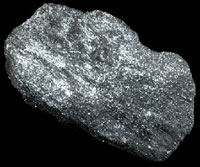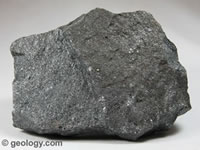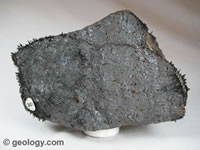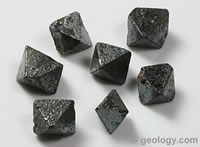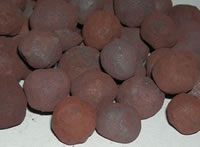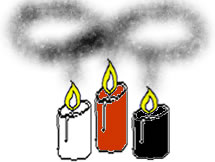 |
 |
|
Properties of Stones and Crystals
|
||||||||||||||||||||
|
|
|||||||||||||||||||||
|
|||||||||||||||||||||
|
|
|||||||||||||||||||||
|
pics coming soon |
Jacobsville Sandstone Jacobsville Sandstone is a red sandstone formation, marked with light-colored streaks and spots, primarily found in northern Upper Michigan, portions of Ontario, and under much of Lake Superior. Desired for its durability and aesthetics, the sandstone was used as an architectural building stone in both Canada and the United States. The stone was extracted by thirty-two quarries throughout the Upper Peninsula of Michigan approximately between 1870 and 1915. The sandstone has been variously called redstone, brownstone, Lake Superior Sandstone, and Eastern Sandstone. In 1907, the Jacobsville Formation was given its current classification and the name Jacobsville, in honor of Jacobsville, Michigan, a town known for its production of the sandstone. The two main varieties of Jacobsville Sandstone that were quarried were redstone and brownstone. Redstone came from the Jacobsville area, in both uniform and variegated varieties. A purplish-brown variety of brownstone known as rain-drop, so named for its wet appearance, was described as the "most handsome stone quarried on Lake Superior." Brownstone and rain-drop were supplied from Marquette, however, supplies were generally limited. Until the early 1900s, Jacobsville Sandstone was popularly known as Lake Superior Sandstone, brownstone or redstone and prefixed by the location in which it was quarried, such as Marquette and Portage Entry (e.g., Marquette brownstone). Several buildings in the Upper Peninsula and across the United States and Ontario, Canada incorporate Jacobsville Sandstone in their construction. In the Upper Peninsula, these buildings include The Calumet Theatre, Saint Ignatius Loyola Church, and several buildings in the Quincy Street Historic District. Elsewhere, the sandstone was used in the original Waldorf-Astoria Hotel in New York City. Jacobsville Sandstone was popular as a building material because of its strength, durability and aesthetic appeal. In particular, it is resistant to the extremes in temperature of fire and the freeze-thaw cycle of northern climates.The Mining Journal of Marquette reported on November 20, 1875, that: "its fire-proof qualities were thoroughly tested in the great Chicago fire, where Lake Superior brownstone walls ... stood intact, without a crack, scale or blemish being caused by the great heat under the influence of which marble fronts crumbled and fell to the ground." Jacobsville Sandstone is generally red, due to small quantities of iron oxides, mottled with various pinks, whites and browns. The sandstone exhibits many white streaks and spherical spots, caused by leaching and bleaching, which form sharp boundaries with surrounding colors. Its lithology varies from quartz-rich to feldspar-rich sandstone and shale. The formation consists of four distinct facies: conglomerate, lenticular sandstone, massive sandstone, and red siltstone. The sandstone is well-cemented and contains no glacial deposits and no fossils. The grains of Jacobsville Sandstone range from .25 to .5 mm (0.0098 to 0.0197 in) in size. Based on an average from samples taken in Marquette and Alger counties, Jacobsville Sandstone is composed of: 27.4% nonundulatory quartz, 27.0% undulatory quartz, 23.0% potassium feldspar, and 12.3% silicic volcanic clasts. Smaller constituents are 3.8% polycrystalline quartz, 2.4% metamorphic, 1.4% sedimentary, 1.3% opaque, 0.8% mafic volcanic, and 0.1% plagioclase. Jacobsville Sandstone's heavy mineral suite is 84% ilmenite, 4-5% leucoxene, 4% garnet, 3% apatite, 3% zircon, and 1% tourmaline. Metaphysical properties: Because Sandstone is created by either wind or water, it is often called a “stone of creativity”. It strengthens relationships within groups, both at home and the workplace. Use Sandstone to keep you from getting distracted, especially during mediation. A cheerful stone, Sandstone keeps those annoying tantrums and mood swings under control. When used on the Sacral chakra, Sandstone can help you discern the truth among those around you and to keep your mind clear when making decisions. Physically, Sandstone can help strengthen bones, nails and hair. It is also helpful with disorders of the eyes as well as water retention.
|
||||||||||||||||||||
|
|
|||||||||||||||||||||
| Kona Dolomite Only in Marquette county does the iron give it the pink and red color. Moose Blood when red Properties |
|||||||||||||||||||||
| .. | |||||||||||||||||||||
|
still creating this page....check back for updates |
|||||||||||||||||||||
|
Specular Hematite FE2 O3 Specular hematite has a metallic luster and appears to be a rock composed of shiny mica flakes. Instead those flakes are hematite. Even though this hematite has a silver color, it still produces a reddish streak - which is a key to hematite's identification. Hardness testing on specular hematite is difficult because the specimens tend to crumble.
Most of the information on hematite applies to specular also, including how it formed and where it can be found.
|
|||||||||||||||||||||
 Manmade |
Hematite Novelties: Products called "magnetic hematite" and "iridescent hematite" are often offered for sale in gift, tourist, novelty, and science shops and their websites. Most of the time these materials are not hematite but are man-made materials that do not even have the same chemical composition as hematite. Buy them if you like them but not because you think that you are getting a unique mineral specimen.
|
||||||||||||||||||||
|
Magnetite FE3 O4 Because they are both iron ore, hematite and magnetite look identical with one big difference: magnetisim. Magnetite is best known for its property of being strongly attracted to magnets. Some forms of magnetite from specific localities are in fact themselves magnets. Commonly known as Lodestone, this magnetic form of magnetite is the only mineral that is a natural magnet. Due to the magnetism of lodestone, small iron particles are often found clinging to its surfaces. (Some dealers may even intentionally place metallic filings on a lodestone to demonstrate its magnetism.)
Both hematite and magnetite are often found banded with other materials, such as chert or quartz. Some of the pieces I brought back from the UP are like this, a magnet will stick to only one band on the rock. I found out that this combination is called taconite, but sadly is being crusted so that the iron ore can be used.
Metaphysical Properties: |
|||||||||||||||||||||
|
|
|||||||||||||||||||||
|
|
|||||||||||||||||||||
|
|
|||||||||||||||||||||
|
Iron Quartz Powerful healing crystal, bringing together the supernatural clarity of clear quartz with earthy blood red iron. Optimizes blood circulation and helps to restore energy. Access the hidden energy of nature. Encourages practical effective action. Reveals fine or subtle energies. Grounds one in the here and now. One of my favorites, there are some beautiful specimens
found in the Lake Superior area. |
|||||||||||||||||||||
|
|
|||||||||||||||||||||
|
|
|||||||||||||||||||||
|
|
|||||||||||||||||||||
|
|
|||||||||||||||||||||
|
|
|||||||||||||||||||||
|
|
|||||||||||||||||||||
|
© 2006-2022 Infinite Flame magickalshoppe@infiniteflame.com Home The Truth About Gel Candles Using Gel Candles for Magick Stone & Crystal Information Wicked Rose Jewelry Jewelry Archive Pendulums Incense Alchemy of England Products Candles: Home Elemental Quarters Set Newsletter Archive Links About Customer Service Website Designed and Maintained by me |
|||
 |
|
||
